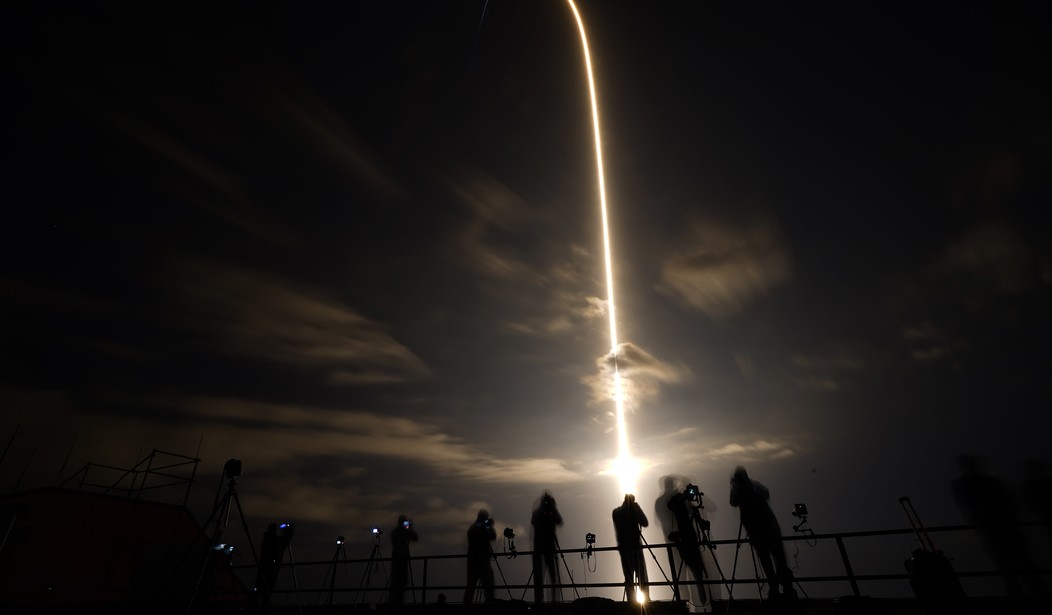Houston, we have a helium leak. Recently, it was learned that astronauts launched into space by the National Aeronautics and Space Administration (NASA) were stranded aboard the International Space Station (ISS) after engineers uncovered at least five helium leaks in their Boeing Starliner ship. Tasked with ferrying astronauts between Earth and the ISS, this shoddily built vessel cost taxpayers a gravity-defying $4.8 billion and seemingly has little to show for the astronomical outlay. Boeing and NASA officials knew that the Starliner had leakage issues but gave the go-ahead to avoid already-chronic delays. Instead of writing more blank checks for boondoggles and putting astronauts in harm’s way, NASA needs to seriously rethink its priorities.
From the start, Boeing’s Starliner has been plagued with problems. This maddening misadventure began in 2014 when the agency inked deals with Boeing and SpaceX to develop ships capable of bringing astronauts to orbit. NASA was understandably frustrated that taxpayers were paying the Russian Space Agency $86 million per ride to launch American crew into space and wanted more control over the process. NASA paid Boeing $4.2 billion compared to $2.6 billion for SpaceX, but justified Boeing’s premium because of nostalgia and close ties.
Starliner’s maiden voyage was originally slated for 2017, but engineering delays kept the ship grounded. When the Starliner was finally “ready” for an (unmanned) flight at the end of 2019, a software snafu resulted in a faulty orbit and the mission ended in failure. A 2021 re-do was derailed by corroded valves, and subsequent parachute system issues, wiring problems, and more valve issues kept astronauts off the spacecraft until 2024. Meanwhile, costs piled up. Taxpayers have had to shell out an additional $600 million to Boeing for Starliner development, while Boeing has spent $1.5 billion on its own cost overruns. But, like most of its missions, NASA keeps calm while taxpayers alarmingly look on.
This fiasco is only a small component of NASA’s much larger fiscal foibles. The Artemis III mission (which Boeing is significantly involved in) is slated to bring humans to the moon for the first time since the Apollo landings, and the Artemis IV mission will ferry astronauts to a new space station orbiting the moon. These plans do not come cheap. In January testimony to Congress, NASA acting Inspector General George Scott estimated that Artemis program total costs through 2025 could eclipse $93 billion. That figure excludes tens of billions of dollars in research and development costs, in addition to any unforeseen costs related to the lunar space station. It’s a foregone conclusion that space spending through 2030 will far surpass $100 billion, but concrete estimates are few and far between. And, as Scott notes, “decision makers will have limited knowledge into the full scope of...costs until an estimate is created.”
Recommended
Rocket costs alone have created a galactic hole in taxpayers’ wallets. When the Artemis project first launched in 2012, prevailing opinion at NASA was that the Space Launch System (SLS) rocket for getting astronauts to the moon would “only” cost $15 billion. Development costs have since ballooned to more than $23 billion. As NASA Inspector General (IG) Paul Martin noted in a March 2022 meeting of the House Subcommittee on Space and Aeronautics, the $4 billion per launch price tag is “unsustainable” and “does not include development costs required to get the Artemis program to this point in time.”
Meanwhile, delays abound. In January, NASA leadership officially bumped the date of Artemis III from late 2025 to September 2026, citing technical and safety-related delays. The Government Accountability Office seems to anticipate further delays. According to a November report by the watchdog, “if development took as long as the average for NASA major projects, the Artemis III mission would likely occur in early 2027.” If anything, the project has been unusually slow; “some flight tests have been delayed” and “a significant amount of complex work remains.”
If policymakers got their heads out of the clouds, they’d realize that robotic exploration can complete missions at a fraction of the time and cost required for manned exploration. Cambridge cosmology and astrophysics professor and astronomer royal Martin Rees rightly notes, “the practical case (for human spaceflight) gets weaker and weaker with every advance in robotics and miniaturization.” America’s space agency seems to agree: “[r]obots don't need to eat or sleep or go to the bathroom. They can survive in space for many years and can be left out there—no need for a return trip!”
NASA should leverage robotic exploration to lower costs and eliminate risks to astronauts’ lives. Whether ferrying crew to the ISS or sending astronauts to the moon or Mars, manned missions cost taxpayers dearly with little compelling justification. It’s time for a new approach that keeps helium leaks and mission creep to a minimum.
David Williams is the president of the Taxpayers Protection Alliance.

























Join the conversation as a VIP Member